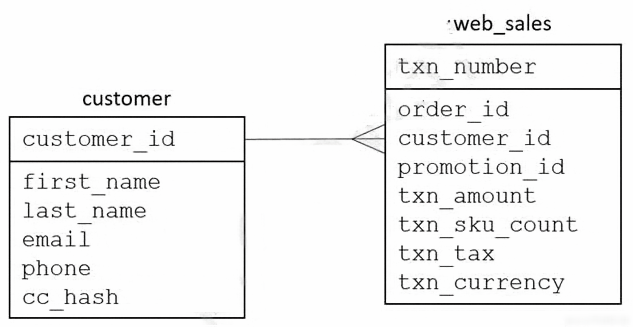

A retail company is using an Amazon S3 bucket to host an ecommerce data lake. The company is using AWS Lake Formation to manage the data lake.
A data analytics specialist must provide access to a new business analyst team. The team will use Amazon Athena from the AWS Management Console to query data from existing web_sales and customer tables in the ecommerce database. The team needs read-only access and the ability to uniquely identify customers by using first and last names. However, the team must not be able to see any other personally identifiable data. The table structure is as follows:
Which combination of steps should the data analytics specialist take to provide the required permission by using the principle of least privilege? (Choose three.)
Ramshizzle
Highly Voted 2 years, 10 months agoalfredofmt
Highly Voted 2 years, 8 months agopk349
Most Recent 1 year, 12 months agopkethireddy
1 year, 5 months agogod_father
1 year, 2 months agob33f
2 years, 5 months agorav009
2 years, 6 months agoCHRIS12722222
3 years agofinnliang
2 years, 12 months agof4bi4n
2 years, 11 months ago